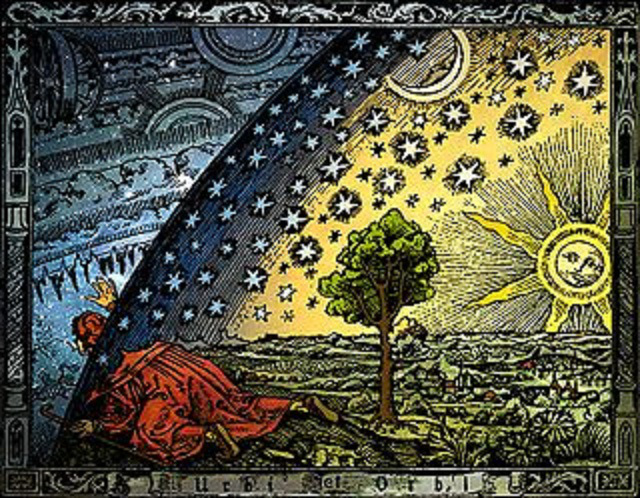Reference: UNIVERSE: The Basic Definitions
A person’s identification of himself with phenomenon in the universe lies at the bottom of his difficulties. As the person addresses such identifications his awareness increases and his problems start to resolve. An identification with the body is quite common.
.
Definition of IDENTIFICATION
When a difference exists, but the person cannot see it, then there is an identification in the person’s mind. His perception is simply not refined enough, for him to see the difference.
Most people go around thinking that they are the body. Their attention is, therefore, fixated on their body all the time. There is nothing wrong with the body. It is a wonderful mechanism, but there are differences between the body and the self that one should be aware of.
Others may identify themselves with their individuality; so they are not aware of the feelings of others. They simply cannot appreciate life in general.
Some people identify themselves with the sorrow and misery in the world; so they go around feeling miserable all the time. They cannot resolve anybody’s suffering.
Identification results in a fixation of attention, which the person is not aware of. The fixation simply narrows the person’s viewpoint. For example, a person who is identifying himself with his body, is mainly aware of the needs of the body for sex, food and survival. All his concerns are guided by those needs.
.
Notes
The percels (perceptual elements) contain identification to the degree they are not refined. Such identification is addressed quite effectively on the grades of Scientology.
Identification is best addressed by looking at things more closely and recognizing them for what they are. This occurs when the person is keenly observing, contemplating and meditating with eyes open and, at times, with eyes closed.
.
Key Misconception
It is a key misconception to think that one knows it all and one does not need to look at things closely.
.
More Misconceptions
You may discover more misconceptions on your own, if you contemplate on each sentence of the above definition with mindfulness. Please see:
The 12 Aspects of Mindfulness
Or, you may end up improving upon this definition.
Good luck!
.
Reference: UNIVERSE: The Basic Definitions
An engram is a heavy sensation that has not been assimilated in the mental matrix; therefore, a person is not aware of its content. Nevertheless, an engram influences the body and mind adversely, causing much discomfort. The sensations experienced during birth are engrams.
.
Definition of ENGRAM
Engram is a traumatic experience, sensations from which have not been assimilated in the mental matrix.
An engram exists in the mind and influences the body, but the person is not aware of it.
Birth is an excellent example of an engram. Everyone has it, and it generally is the cause of the auto-immune disease in the body.
When a person becomes aware of his birth engram and assimilates it, the auto-immune disease disappears. The damage already caused by the auto-immune disease, however, may take a long time to repair itself.
.
Notes
Dianetics by L. Ron Hubbard deals with the subject of engrams extensively. I was very skeptical of the existence of engrams at first; but then, to my surprise, I discovered my birth engram and assimilated it with the help of Dianetics auditing.
This had surprising results. But then I found that not more than a couple engrams may be discovered after the birth engram. Fifty hours of Dianetics auditing are more than enough.
.
Key Misconception
It is a misconception to think that there exists a single engram, the discovery and assimilation of which will handle the whole case of a person.
.
More Misconceptions
You may discover more misconceptions on your own, if you contemplate on each sentence of the above definition with mindfulness. Please see:
The 12 Aspects of Mindfulness
Or, you may end up improving upon this definition.
Good luck!
.
Reference: UNIVERSE: The Basic Definitions
As knowledge became more sophisticated, it progressed from religion to philosophy and science. All the early philosophers and scientists were man of religion. They were attempting to know the world; and, therefore, God. They were not satisfied with a theistic interpretation of God.
.
Definition of PHILOSOPHY
Philosophy, literally means, “the love of wisdom.” It is a systematic study of general and fundamental questions concerning topics like existence, reason, knowledge, value, mind, and language. It is a rational and critical inquiry that reflects on its own methods and assumptions.
The scientific method is a product of philosophy, that has taken the seeking of answers to a new level. The scientific method has been pretty successful in the realm of matter and energy, where the experience has been pretty uniform for everybody. However, it has run into trouble in the areas where experience has been subject to increasing interpretation, such as, in the realm of thought.
The scientific method has always sought consistency with our perception of the universe. As perceptions get finer and more uncertain, it is necessary to establish consistency at the broadest level possible, and then use that certainty to establish consistency at the next level, and so on. This is assisted by the principle of Oneness and the concept of anomalies (See LOGIC).
.
Notes
Philosophy has followed the same path as religion, which is the seeking of answers. From philosophy has come the more robust method of investigation, which is science. When we take a broad view of religion, philosophy and science, we see a powerful and insatiable drive to find answers.
Philosophy has achieved a remarkable precision in its investigation of the physical phenomena through its scientific method. But the same precision has been lacking when it comes to the spiritual or thought phenomena. This has slowed down the progress of philosophy.
Now that we can state the principle of Oneness with precision, we can review and strengthen the gains that philosophy has made until now and move forward from there.
.
Key Misconception
More than a misconception, what seems to be missing from the subject of philosophy, is a method to assimilate all the knowledge that we have gathered. That requires the principle of Oneness.
.
More Misconceptions
You may discover more misconceptions on your own, if you contemplate on each sentence of the above definition with mindfulness. Please see:
The 12 Aspects of Mindfulness
Or, you may end up improving upon this definition.
Good luck!
.
Reference: UNIVERSE: The Basic Definitions
The focus of religion has been on the problem of the suffering of man. A big concern of religion is how to get along with one another without destruction.
.
Definition of RELIGION
The religion was the first effort of the thinking mind to explain the world it experienced. It was beset by unknowns, so it postulated to make sense out of it. It referred to the common denominator of all existence as God. It then started to use God to explain all phenomena, while exploring the nature of God.
Religion contemplated that there must be something that satisfies the deepest desires of man. This brings us to the question, “What do we really want?” Things like pleasure, wealth, fame and power are desired but they are only means to deeper desires, such as, existence, awareness, and joy. Man wants these things to an infinite degree. We recognize this infinite state of satisfaction as God. This divine state exists within us, but it is covered up by distractions. We just have to make this journey from ourselves as we are now to our real selves that is divine.
Each one of us will complete this journey no matter how many lifetimes it takes. What passes from one lifetime to another are thought patterns made of our karma (action). We are what we have thought. Our thoughts have led to certain tendencies. These tendencies have led to certain actions. These actions have certain consequences. This whole pattern of thought is the Karma that determines our current spiritual form. As we dissolve this karma, we make progress toward our real selves that is divine.
Making this journey is the whole purpose of religion. As we dissolve our karma, so we also resolve our social problems and sufferings.
.
Notes
We are looking at religion as a subject here and not at the different religions that exist in the world. The above definition outlines the purpose of religion regardless of what religion it is. The concept of desires, wants, suffering, karma and resolution is dealt with in every religion, though different terminologies are used.
People who swear by Scientology, or who swear by Christianity; or, who swear by Islam, are simply fixated. They have no idea of what religion truly is. They do not know the true basis of Scientology, or of Christianity, or of any other religion that they swear by.
The down side of religion that it it causes fixation on whatever postulate one has made about God. But God is just the opposite of any fixation. There is nothing wrong with entertaining the idea of a personal God. But if a person is fixated on a personal God, he does not understand God.
.
Key Misconception
The key misconception is to get fixated on a religion and its terminology instead of acquiring a deeper understanding of it. All religions are there to help man. It is senseless to fight over them.
.
More Misconceptions
You may discover more misconceptions on your own, if you contemplate on each sentence of the above definition with mindfulness. Please see:
The 12 Aspects of Mindfulness
Or, you may end up improving upon this definition.
Good luck!
.
Reference: UNIVERSE: The Basic Definitions
We look at objective as belonging to the object of thought; and, subjective as belonging to the thinking subject. The anomaly here is that these definitions of objective and subjective are an outcome of our thinking only.
.
The definition of OBJECTIVE-SUBJECTIVE
In science, objective is the information derived from or guided by direct experience or by experiment; and subjective is the information derived from or guided by abstract principles or theory.
Thus, science looks for results that are consistent with the physical universe. It is, therefore, limited to understanding the physical phenomena. When it comes to the understanding of spiritual phenomena, science does not think that it has a firm basis to determine what is consistent.
Normally, we see verifiable information based on facts and evidence to be objective. To us, the information or perspectives based on feelings, opinions, or emotions are subjective. Today we see even facts and evidence being doubted and questioned.
More and more people are moving towards the extreme view that everything is subjective. So, we need another way of looking at the meanings of objective and subjective.
At the highest level of logic we find continuity, consistency and harmony to be the criterion for a complete picture of what is there. We call this criterion the principle of Oneness. Any violation of this principle is an anomaly. Based on the degree of violation, we may define objective-subjective as a scale. The degree of subjectivity is based on our viewpoint. The more anomalies are there in our viewpoint, the more subjective we are.
Viewpoint means the frame of reference that one uses to view things. The viewpoint can be as broad as the whole universe; but it becomes narrow as it gets identified with the universe and cannot differentiate itself from it.
The degree of identification with the universe then gives us a measure of subjectivity. The subjectivity of a viewpoint is then measured by the number of anomalies it cannot see or appreciate because of its identification.
The objective viewpoint is not identified with the universe. Therefore, it is as broad as the universe and can grasp the oneness of the whole universe. It can see and appreciate all anomalies.
To attain objectivity one can start recognizing anomalies broadly, and follow them up to become aware of deeper anomalies. As a person continues to spot deeper anomalies, he starts to become increasingly objective in his viewpoint.
.
Notes
The human society and science is unable to deal with the “spiritual” or the thought universe because it is missing the principle of Oneness as the ideal scene for its logic.
All our current social problems are the result of our inability to use the true logic of oneness in all variations. We, therefore, fail to see and appreciate the actual anomalies underlying the social problems.
Please see The Logic to understand the ideal scene for logic.
.
Key Misconception
A key misconception is not having the proper definitions for objective and subjective.
.
More Misconceptions
You may discover more misconceptions on your own, if you contemplate on each sentence of the above definition with mindfulness. Please see:
The 12 Aspects of Mindfulness
Or, you may end up improving upon this definition.
Good luck!
.






